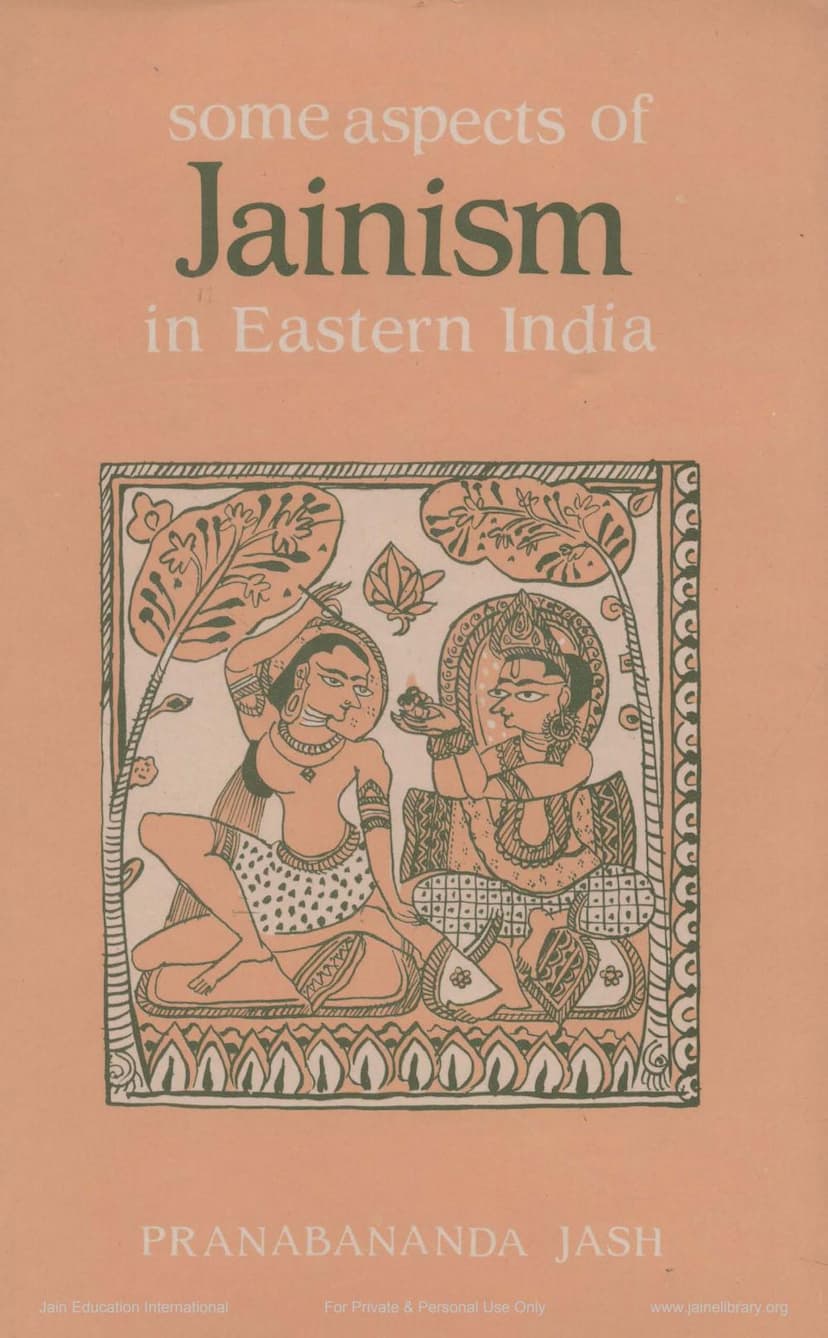Some Aspects Of Jainism In Eastern India
Added to library: September 2, 2025

Summary
This comprehensive book, "Some Aspects of Jainism in Eastern India" by Pranabananda Jash, offers a detailed historical study of Jainism, with a particular focus on its presence and development in Eastern India.
Key themes and areas covered in the book include:
-
The Emergence of Parivrājakas: The book begins by exploring the general rise of the Parivrājaka (wandering ascetic) sect and specifically the Jaina Parivrājaka, situating their emergence within the religious and intellectual ferment of 6th-5th centuries BC India. It highlights the clash between new religious ideas and orthodox traditions.
-
Jainism's Founders and Teachings: It introduces the twenty-four Tirthankaras, with a focus on the pivotal teachings of Pārśvanātha and Mahāvīra. The book analyzes the Jaina monastic order, its organizational structure, and the reasons behind significant schisms within it.
-
Jaina Canonical Texts: A significant portion is dedicated to an examination of Jaina canonical texts, emphasizing the monastic rules and regulations that define the characteristic features of the Jaina monastic order. The book details the sixfold monastic order as an index of spiritual advancement.
-
Jainism in Eastern India: The core of the book lies in its descriptive study of Jainism's prevalence in Eastern India (Bihar, Bengal, and Orissa). It details:
- Bihar: The book highlights Bihar as a significant region for Jainism, being the birthplace of several Tirthankaras and a major center of Mahāvīra's activities. It discusses royal patronage and the presence of Jaina sites and artifacts.
- Bengal: The study explores Jainism's establishment in the lower Gangetic region, mentioning significant centers and the influence of Jaina preceptors like Bhadravāhu. It also discusses the Pāla-Sena period's Jaina iconography found in Bengal.
- Orissa: The book traces the history of Jainism in Orissa from as early as the 8th century BC, discussing its association with Kalinga and the significant patronage it received from King Khāravela. It also touches upon the revival of Jainism in Orissa and its eventual decline, partly due to the rise of Vaishnavism and Jagannatha worship.
-
The Ājīvikas: An appendix is dedicated to the Ājīvikas, a contemporaneous heterodox sect. The book discusses their origins, doctrines (particularly the concept of Niyati or fate), and their relationship with Jainism. It emphasizes that despite ideological proximity, the core philosophy of Ājīvikism (Niyati) is distinct from Jainism.
-
Art and Iconography: The book incorporates descriptions and discussions of Jaina sculptural representations, icons, and temple remains found in Eastern India, providing visual evidence of the faith's spread and artistic traditions.
-
Key Jaina Principles: Throughout the discussion, the book emphasizes core Jaina principles like Ahimsā (non-violence) and Anekāntavāda (non-absolutism), highlighting their significance in Jaina philosophy and ethics.
In essence, "Some Aspects of Jainism in Eastern India" provides a scholarly and detailed account of Jainism's historical trajectory, doctrinal foundations, monastic life, and its deep-rooted presence and influence in the eastern regions of ancient India, with a particular focus on the interconnectedness of religious movements of the era.